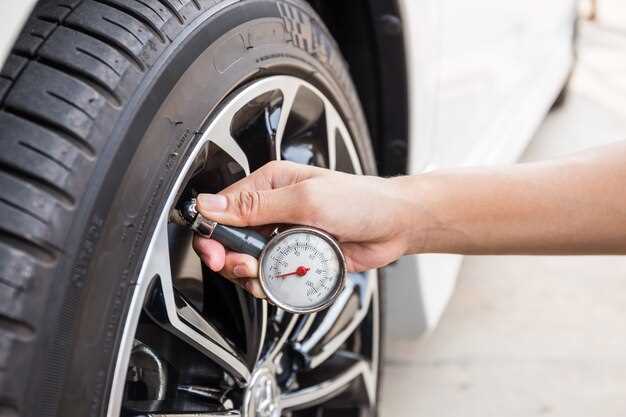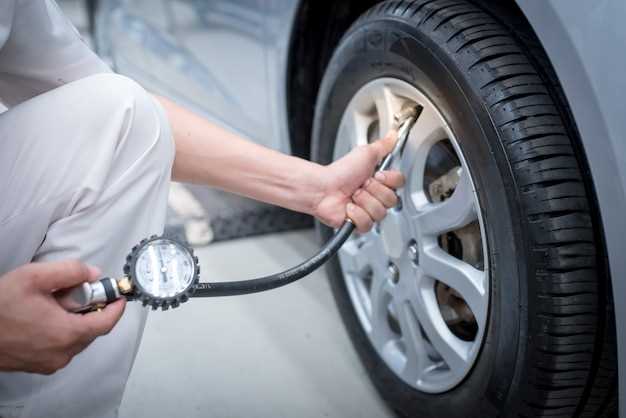
Regularly checking your tire pressure is essential for maintaining vehicle safety and performance. Properly inflated tires not only ensure better handling and fuel efficiency but also extend the lifespan of your tires. Under-inflated tires can lead to dangerous blowouts, while over-inflated tires can reduce traction and increase wear.
Understanding how to properly check your tire pressure is a straightforward process that every driver should master. It involves using a tire pressure gauge, knowing your vehicle’s recommended pressure levels, and conducting regular checks–ideally, once a month and before long trips. By following these simple steps, you can significantly enhance your driving experience and minimize the risks associated with improper tire maintenance.
In this article, we will walk you through the correct methods for checking your tire pressure, the tools you’ll need, and the importance of maintaining the right levels for your safety on the road. Let’s dive into the details of this crucial aspect of car care.
Understanding Recommended Pressure Levels for Your Vehicle

Maintaining the correct tire pressure is crucial for ensuring the safety and performance of your vehicle. Each vehicle model comes with a manufacturer-recommended pressure level, which can usually be found in the owner’s manual or on a sticker located on the driver’s side door jamb. Adhering to these recommendations helps optimize fuel efficiency, tire longevity, and overall handling.
Tire pressure is measured in pounds per square inch (PSI), and the ideal PSI varies depending on the vehicle type, tire size, and load. Driving on under-inflated tires can lead to excessive heat build-up, increasing the risk of tire blowouts and reducing traction. Conversely, over-inflated tires can result in a harsher ride and premature wear, particularly in the center of the tread.
Regularly checking tire pressure is essential, especially before long trips and during seasonal changes, as temperature fluctuations can impact air pressure. As a general rule, it is suggested to check tire pressure at least once a month and before any long journeys. By understanding and adhering to the recommended tire pressure levels, you not only enhance the safety of your driving experience but also contribute to better fuel efficiency and tire life.
Steps to Accurately Measure Tire Pressure
To begin, ensure that the tire is cold, as pressure readings can be affected by heat generated during driving. Ideally, measure tire pressure in the morning or at least three hours after the vehicle has been parked.
Next, locate the valve stem on the tire. This is usually a small, protruding tube covered by a cap. Remove the cap by twisting it counterclockwise and set it aside in a safe place to avoid losing it.
Take your tire pressure gauge and firmly press it onto the valve stem, ensuring a tight seal to prevent air from escaping. You may hear a brief hissing sound when sealing the gauge to the valve; this is normal. Read the display on the gauge quickly to obtain an accurate measurement.
Compare the reading to the manufacturer’s recommended tire pressure, which can usually be found on a sticker inside the driver’s door or in the vehicle’s manual. Make a note of whether your tire pressure is above, below, or within the recommended range.
If adjustments are necessary, use an air compressor to inflate the tire if the pressure is too low. If the pressure is too high, press the valve stem to release some air until the desired level is reached.
Finally, replace the valve stem cap securely to help prevent dust and moisture from entering the valve. Repeat this process for each tire, including the spare tire, to ensure all have the proper pressure for safe driving.
Common Mistakes to Avoid When Checking Tire Pressure

One of the most frequent mistakes people make is checking tire pressure when tires are warm. Heat from driving increases the pressure, leading to inaccurate readings. Always check tire pressure when the tires are cold for the most reliable results.
Another common error is using a faulty or inaccurate pressure gauge. A malfunctioning gauge can provide incorrect readings, resulting in under-inflated or over-inflated tires. Regularly calibrate your gauge or invest in a high-quality model to ensure accuracy.
Failing to reference the vehicle’s manufacturer guidelines is a critical oversight. Each vehicle has a specific recommended tire pressure, usually found on a sticker in the driver’s side door or in the owner’s manual. Ignoring these recommendations can compromise safety and fuel efficiency.
Many people also neglect to check the spare tire. A flat spare can be as unhelpful as low-pressure tires. Ensure that all tires, including the spare, are maintained at the correct pressure.
Overestimating the importance of appearance is another mistake. Just because a tire looks adequately inflated doesn’t mean it is. Relying solely on visual inspection can lead to dangerous driving conditions.
Finally, some individuals check tire pressure at the wrong time of day. Morning is ideal, as it allows for a cooler tire temperature, ensuring accurate readings. Checking at midday or after extended driving can yield misleading results.

